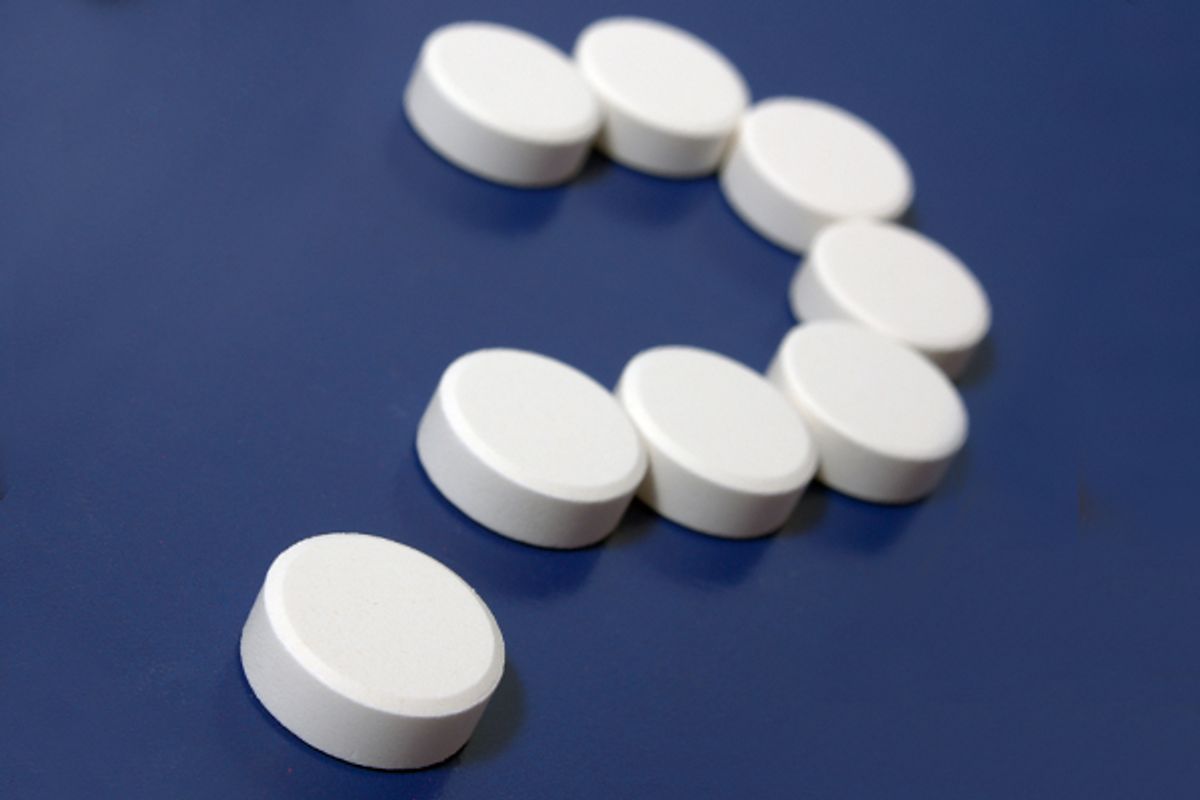 If you’re coming down with a cold this winter and you stop by the local pharmacy to pick up some pseudoephedrine (commonly sold as Sudafed), you will get carded, but it has nothing to do with age. Pseudoephedrine is a key ingredient in methamphetamine. And since 2006, pharmacies have been carding cold sufferers to track their purchases and ensure they do not buy more pseudoephedrine than is legally allowed (3.6 grams per day or 9 grams per month).
If you’re coming down with a cold this winter and you stop by the local pharmacy to pick up some pseudoephedrine (commonly sold as Sudafed), you will get carded, but it has nothing to do with age. Pseudoephedrine is a key ingredient in methamphetamine. And since 2006, pharmacies have been carding cold sufferers to track their purchases and ensure they do not buy more pseudoephedrine than is legally allowed (3.6 grams per day or 9 grams per month).
The law, however, has done more to inconvenience chronic cold sufferers than curb methamphetamine abuse. Regulating pseudoephedrine didn’t end meth production. It simply changed the game. So long as Americans are willing to take drugs to improve performance in an increasingly exhausting work culture, those without access to legal amphetamines like Adderall will use what is available. Just as some college kids take Adderall to study, some Americans who don't have access to psychiatrists will use meth to increase productivity.
Implemented in 2006, the Combat Methamphetamine Epidemic Act of 2005 established restrictions and record-keeping mandates for pseudoephedrine purchases. Some states took the law even further, requiring prescriptions for and electronic tracking of pseudoephedrine purchases. Despite serious efforts to curb methamphetamine production, the results have been dismal.
After a short-lived decline in methamphetamine use following Sudafed legislation, use rates began trending upward again as Mexican traffickers and American manufacturers figured out how to meet lingering demand. While Mexico is increasing its share in the US meth market with high-purity, cheap methamphetamine, underground meth manufacturers in the U.S. are getting around the pseudoephedrine limits by adding new, dangerous chemicals to the mix -- battery acid included.
New Meth in America
Meth might be typically associated with rural areas, but officials are reporting a spike in some meth-manufacturing and sale in some U.S. cities, says a new report by theAssociated Press. The cause is two-fold: While Mexican traffickers are using established urban smuggling routes to transport larger quantities of higher quality meth to cities, locals are warming up to meth-manufacturing as well.
Following pseudoephedrine legislation, Mexican drug traffickers moved quickly to supply Americans with methamphetamine. From 2007 to 2011, the amount of seized meth along the southwest border rose from 4,000 pounds to more than 16,000 pounds, while the purity of Mexican meth spiked from 39 percent in 2007 to 88 percent by 2011, the AP reported. But while Mexican meth was becoming more prevalent and potent, it was also getting cheaper: the price fell 69 percent, dropping from $290 per pure gram to less than $90, according to the AP.
Alongside Mexican meth’s growing presence in America and urban areas in particular comes a rise in homemade meth in cities and suburbs, where there are more pharmacies to score from and people to recruit as pseudophedrine buyers. In 2011, St. Louis and Jackson counties in Missouri reported three times the meth lab seizures than 2009, while the Evansville, Indiana area saw a 500 percent rise in seizures since 2010.
Because urban manufacturers do not have the same space necessary for a meth lab, new methods of use arise. With “one-pot” or “shake-and-bake” techniques, meth-makers can make quicker, albeit smaller batches that do not create the same heavy ammonia odor that made rural environments ideal for production. To do so, however, they must combine meth amphetamine with “toxic substances such as battery acid or drain cleaner in 2-liter soda bottles,” the AP said.
“We know the fuel for domestic labs is pseudoephedrine,” Tom Farmer, coordinator of the Tennessee Methamphetamine and Pharmaceutical Task Force, told the AP. “The source for that is pharmacies and the majority of pharmacies are in urban areas.” Farmer added, “Pseudoephedrine has become as good as currency.”
With the increase in meth production in cities and suburbs comes an increase in the danger associated with this particular black market, including violence among gangs becoming increasingly involved in the sale of meth and accidents associated with meth-production. “I’m seeing car fires from meth in urban areas now, more people getting burned,” Farmer told the AP.

Shares